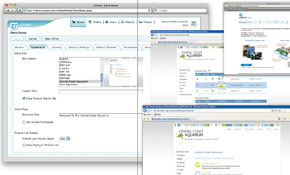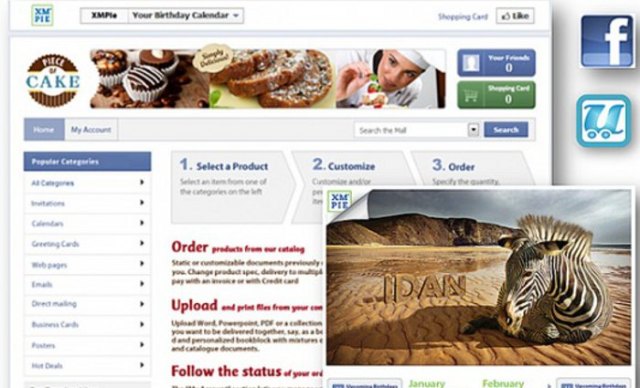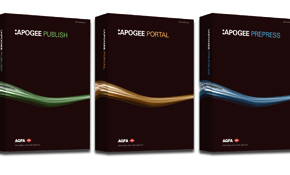
When the first web-to-print (W2P) products started hitting the market in the 1990s, a lot of printers were sceptical whether the software packages could deliver what they promised on the box. As a result, take-up of this kind of technology was slow.
That’s not to say that printers didn’t appreciate the potential benefits offered by W2P – so much so that some of them decided to develop their own in-house solutions to offer this service to customers. The downside to this approach was that it required the services of a full-time programmer, which ultimately proved to be expensive and difficult to manage. Then in the early 2000s, a new breed of W2P products was unleashed, bringing a sea change in attitudes, and in turn, adoption rates.
One of the companies at the forefront of this charge was XMPie, which was bought out by Xerox in 2006. It introduced a wide range of W2P products to the Australian market in 2003. One year later, the company launched the jewel in its crown in the form of personalisation software product uStore.
Peter Brittliff, marketing manager for production systems and workflow solutions at Fuji Xerox Australia, admits that initial take-up of uStore was disappointingly slow “but today interest is very high and we have several customers who are moving to uStore from other W2P solutions”. He cites the example of one print customer in Sydney who has migrated more than 40 online stores to a uStore server in the past 12 months.
Brittliff is banking on the product becoming more widespread in future with the launch of version five of uStore at PrintEx11. The product is set to ship in Australia in June 2011.
Brittliff says one of the main attractions of uStore is its ease-of-use. Customers can very quickly and easily set up B2B and B2C e-commerce sites and populate them with a wide range of different template documents ready for personalisation through uEdit, a WYSIWYG editor. Another useful tool built into uStore is Connect. “This allows users to embed the uStore document selection and customisation workflow into any website,” says Brittliff.
“This approach gives our customers tremendous flexibility without requiring long development times. Lastly, if a custom solution is required, the platform has an extensive API set that allows users to build a web-to-print site that will meet their specific needs.”
The results that can be achieved using the latest version are fundamentally the same as its predecessor, but a number of key new functions have been added to version five, says Brittliff. This includes the introduction of multi-level order approvals, split shipping, receipt customisation and improved storefront password policies.
Fuji Xerox customers who are current users of version four and have a software support services and maintenance agreement, are entitled to a free license upgrade to version five. New users – either on a usage or unlimited licensing model – can expect to pay anywhere in the region of $18,000 to $60,000.
Brittliff is effusive about the latest incarnation of the software, of which he has high hopes. He says that “uStore version five is an evolutionary release, building capabilities into an already mature, stable product, which allow existing customers to push the boundaries of their offering and for new users to develop their capabilities.”
One of the key reasons that he sees the product going down a storm is its accessibility to novices and programming whiz kids alike. Setting up uStore couldn’t be easier. It uses a set of forms to guide the user through the creation of as many online stores as they require. Each store can have a unique look and feature a specific set of printed products. Customi-sation parameters can then be created for each of these store – you define which variable elements can be edited by the customer – in addition to bespoke pricing and shipping information. When the designs are posted, the store is ready for the customer to visit. The beauty of the system is the ordering process for clients is equally as simplistic as the store creation procedure itself, says Brittliff.
“Upon selecting an item, customers are guided through the process – customisation, uploading data and images, viewing costs, reviewing and approving the proof, selecting quantity, print priority, shipping options and ordering. Upon submission, a confirm-ation and order summary is provided. In the ‘My Account’ section, the customer can view pending and past orders, modify and resubmit orders, view and edit account information and manage recipient lists.”
Each existing customer is assigned a unique login. If printers want to open uStore to casual users, customers can create their own logins for ordering on the site. This opens a print business up to the potentially lucrative B2C market. And it’s not just W2P products that customers can order via uStore – they can also purchase email marketing materials.
“Customers can set up email newsletters or other electronic direct marketing pieces so that their end users can select a design, add their content, upload the list of customers to send it to and schedule the fully personalised email to be delivered,” says Brittliff.
He adds that there’s huge scope for growth in this area and as a result XMPie plans to continue to add new features to uStore that will enable customers to offer more “high value” marketing communications, as well as W2P. In terms of rival options Brittliff says that there are “literally hundreds of W2P solutions available” – including Xerox’s FreeFlow Web Services – yet no single product can do everything. And rather than see this raft of available products as a threat, he believes that it will help to grow the W2P market. While Brittliff accepts that mass-market adoption of W2P products has not yet occurred, the flipside to this is that the potential market for W2P software is tremendous.
“According to InfoTrends research, the share of web-purchased commercial print volume will double from 15% in 2009 to 30% in 2014. When compared to data from 2000, the percentage has grown by over five times, where only less than 3% of print volumes were e-enabled.”
As a result, “the potential market for uStore is huge,” he argues. “Not only are corporate organisations already looking to reduce inventory of print material, but they are also looking for ways to maximise the effectiveness of their collateral and reduce print costs: W2P makes these key points a reality.”
Specifications
Operating system Windows
RAM 4GB
Additional software for both configurations: Microsoft SQL Server 2005 Express Edition with Advanced Services (a free version of SQL Server Express)
Price: $18,000-$60,000 to new users. Free upgrades are available for existing uStore version four customers
Contact: Fuji Xerox www.fujixerox.com.au
The Alternatives
Pent Net Web-to-Print
This home-grown W2P system has found favour with a number of Pent Net’s customers, which include the likes of Hally Labels and IPMG. The tool offers online job quotes, print on-demand, re-orders, variable data and inventory management. It is a “white label” solution, so customers can brand the portal to match their own website. The system allows for credit card payment, after which it will send print-ready PDFs directly to the press, cutting out admin costs.
Contact Pent Net (02) 9261 0552 www.pent.net
Online Print Solutions Orderdesk
OrderDesk works in a very similar way to uStore. Customers can select items – and view pricing – from a pre-defined list of templates for documents such as corporate stationery, brochures and newsletters. They can then determine specifications and the required quantity and pay for the order online with a credit card. Customers purchasing OrderDesk are also recommended to opt for NexJob, Online Print Solutions’ job submission and quoting tool. This enables users to submit artwork for non-templated items in virtually any file format and NexJob then converts the document into a PDF and presents it to the user for sign off.
Contact Online Print Solutions (02) 9439 2242
www.onlineprintsolutions.com
EFI Digital StoreFront
Available on a self-hosted or a software as a service basis (SaaS), EFI’s Digital StoreFront integrates with other EFI products such as Fiery, PrintSmith and Logic, to provide an “end-to-end content and commerce workflow”. This means less re-keying of job data and as a result it reduces the chances of production errors. Like other W2P solutions, Digital StoreFront provides a fully customisable shopping platform through an easy-to-use storefront. Products can be submitted by customers from their desktop computer anywhere in the world and thanks to Digital StoreFront’s automatic PDF conversion function, the products can be proofed on screen as the document is produced. The system can even recreate different finishing effects to give users a better feel for what the printed item will look like.
Contact EFI (02) 9959 2235 www.efi.com
Comment below to have your say on this story.
If you have a news story or tip-off, get in touch at editorial@sprinter.com.au.
Sign up to the Sprinter newsletter


